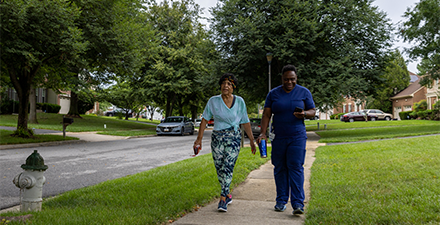The old "you snooze, you lose" adage couldn't be further from the truth.
Researchers are gaining more and more insight on the role of sleep in overall health, and physical therapists (PTs) should be equipped to help their patients and clients understand that role, according to authors of an article that provides guidance on basic screening tools and sleep hygiene education. In fact, authors argue, it's an especially important consideration for PTs, who often work with patient populations whose conditions are associated with sleep disruption.
Appearing the August issue of Physical Therapy (PTJ), APTA's scientific journal available for free to all members, the "Perspective" article lays out some stark numbers: between 50 and 70 million adults in the US experience chronic sleep disturbances, and 62% of all Americans experience a sleep problem several nights a week—and it's likely those numbers are low, authors write, because estimates are that as many as 90% of sleep problems go undiagnosed. The problem is so pervasive that the US Centers for Disease Control and Prevention has designated insufficient sleep as a public health problem.
Writing that sleep "has an important role in the proper functioning of most, if not all, body systems," authors explain sleep's role in immune function and tissue healing, pain modulation and perception, cardiovascular health, depression and anxiety, motor skill learning, and cognitive function. Among the physical therapy patient population, sleep disturbance can be an especially prevalent issue for individuals with Parkinson disease, Alzheimer's diseases, multiple sclerosis, spinal cord injury, neck and back pain, and postoperative status, among a host of neurological and orthopedic conditions, authors write.
"It is suspected that the prevalence of sleep disorders and disturbances in physical therapy clients is very high, although studies are needed to verify this concentration," state the study's authors. "There is much opportunity for PTs to play an active role in providing sleep health education … and potentially reduce the onset of chronic conditions in addition to promoting sleep health in all clients."
So what can the PT do? Authors suggest a multistep approach that begins with an assessment of overall sleep health and screening for the risk of a sleep disorder, with a referral for additional assessment if the PT finds increased risk. Additionally, PTs should provide "sleep hygiene education"—the basics of health sleep that include regular sleeping and waking hours, changes to diet to avoid eating large meals close to bedtime, and avoiding light-emitting electronics within 30 minutes of trying to sleep, among other tips (the entire sleep hygiene education list is included in the article).
Authors write that PTs also should provide an appropriate exercise program that can help regulate sleep, and consider discussions about body positioning in bed, as well as bed mobility issues for clients where indicated.
In addition to the sleep hygiene tip list, the article includes charts on suggested screening tools to assess for the 3 most common sleep disorders—chronic insomnia, obstructive sleep apnea, and restless legs syndrome—as well as questionnaires to help determine overall sleep quality and daytime sleepiness. Authors also discuss the use of wearable consumer electronics to track sleep, saying evidence supporting their reliability is slim but that they may be useful as a way to help individuals feel they have more control over regulating their sleep patterns.
Authors of the study also argue that given the increasing weight of evidence showing the relationship of sleep to almost all facets of health, PT clinical education programs "should consider including information about sleep, screening for sleep disorders, and methods to optimize sleep in their curriculum."
Research-related stories featured in PT in Motion News are intended to highlight a topic of interest only and do not constitute an endorsement by APTA.
